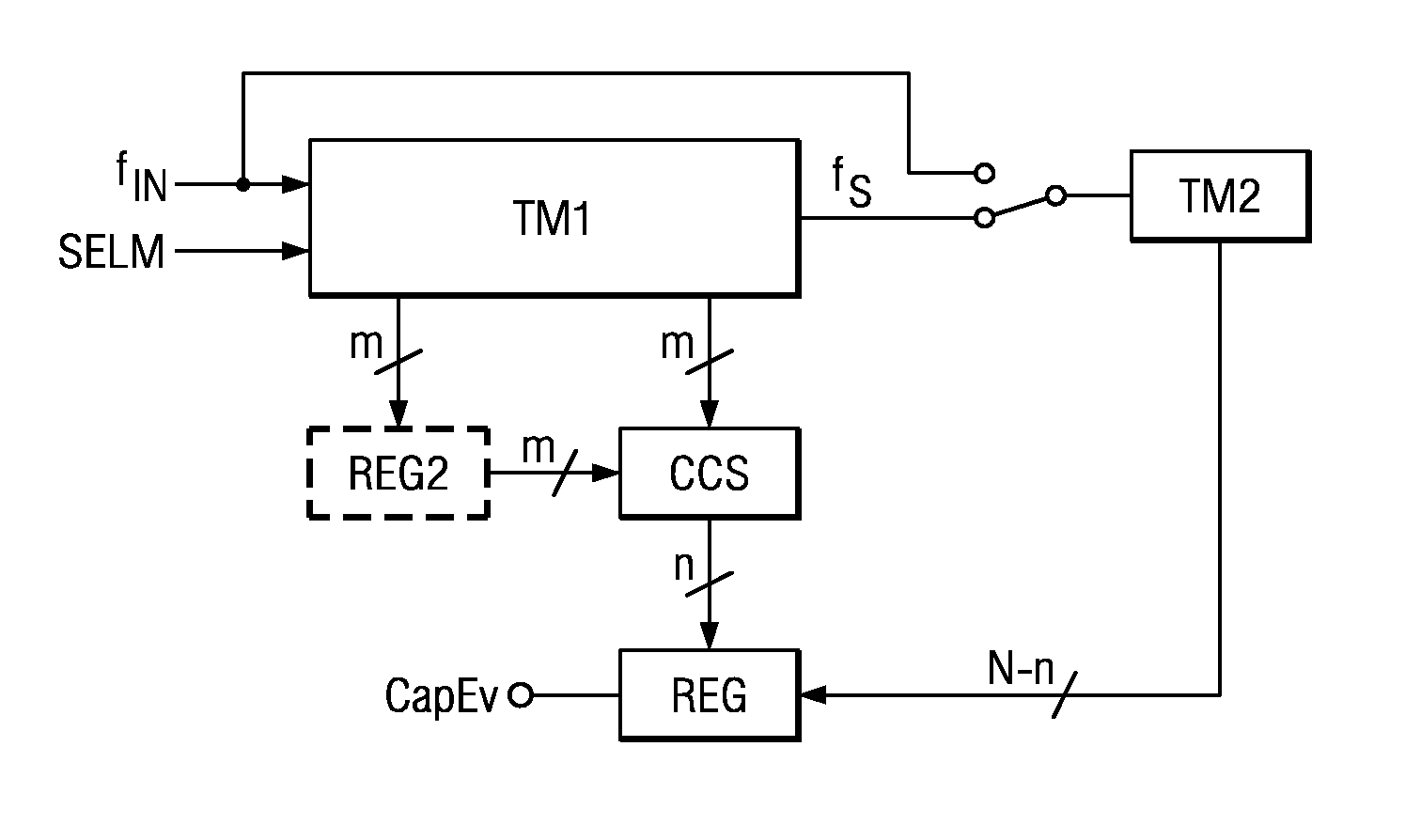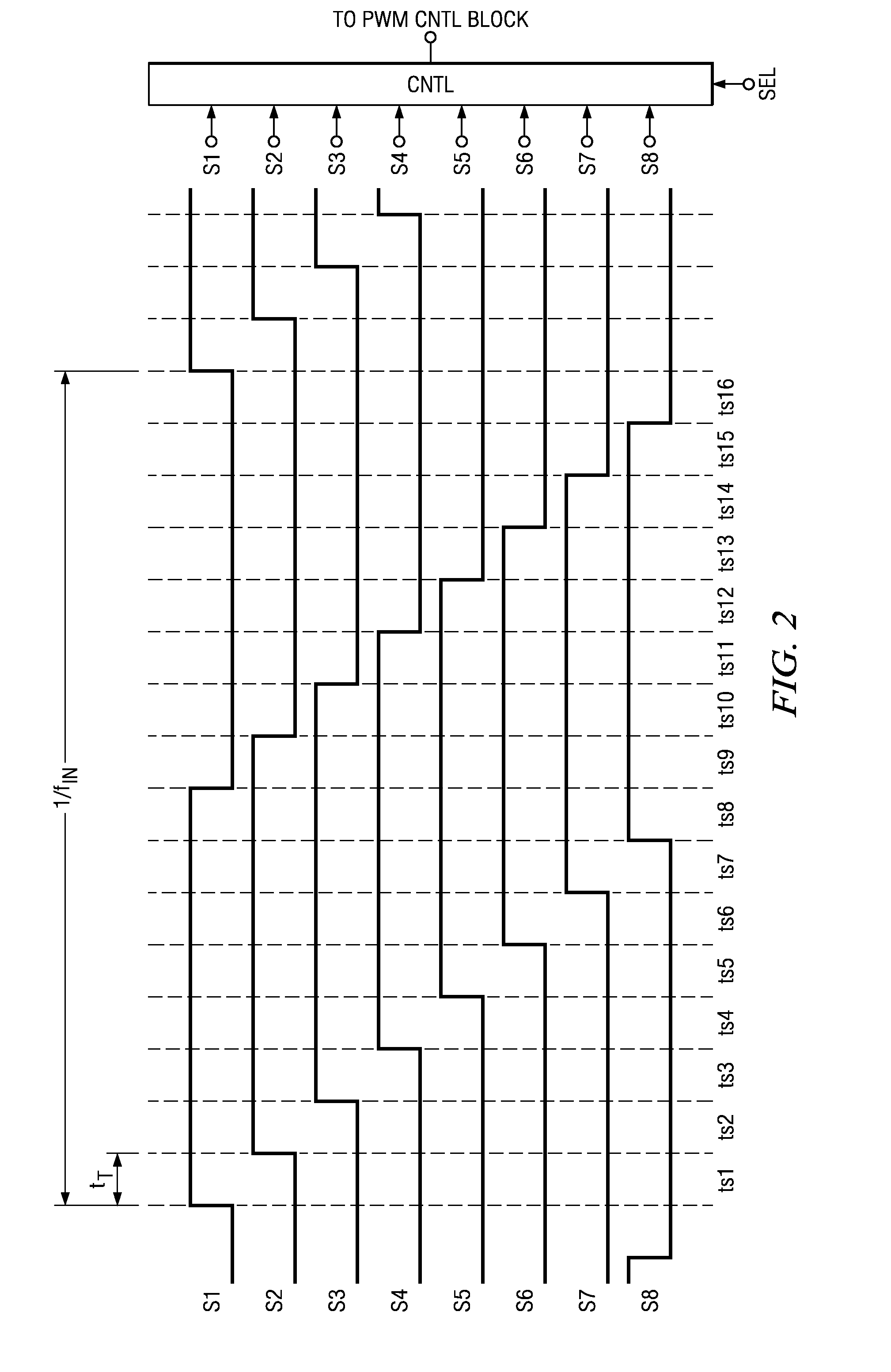Timer for low-power and high-resolution with low bits derived from set of phase shifted clock signals
a clock signal and low-power technology, applied in the direction of generating/distributing signals, instruments, pulse techniques, etc., can solve the problems of limiting the resolution of the timer and the overall performance of the timer, increasing the power consumption of digital circuitry, and increasing the clock frequency. achieve the effect of a favorable ratio
- Summary
- Abstract
- Description
- Claims
- Application Information
AI Technical Summary
Benefits of technology
Problems solved by technology
Method used
Image
Examples
Embodiment Construction
[0031]FIG. 1A shows a simplified block diagram of a first embodiment of the present invention which has an input capture mode. The electronic device includes a first counter stage TM1 and a second counter stage TM2. Both counter stages receive the input clock signal fIN as an input clock signal. The second counter stage TM2 includes a conventional counter which typically includes a chain of storing units such as flip-flops. First counter stage TM1 includes a chain of delay elements (i.e. a ring oscillator) and outputs a set of m phase shifted clock signals to code converter stage CCS. Capture event signal CapEv issues upon occurrence of a specific event. Select timer value signal SELM prompts first counter stage TM1 to output the states of the set of m phase shifted clock signals to code converter stage CCS. Code converter stage CCS converts the states of the set of m phase shifted clock signals into a group of n least significant bits of a count value of bit length n. The number of...
PUM
 Login to View More
Login to View More Abstract
Description
Claims
Application Information
 Login to View More
Login to View More - R&D
- Intellectual Property
- Life Sciences
- Materials
- Tech Scout
- Unparalleled Data Quality
- Higher Quality Content
- 60% Fewer Hallucinations
Browse by: Latest US Patents, China's latest patents, Technical Efficacy Thesaurus, Application Domain, Technology Topic, Popular Technical Reports.
© 2025 PatSnap. All rights reserved.Legal|Privacy policy|Modern Slavery Act Transparency Statement|Sitemap|About US| Contact US: help@patsnap.com



